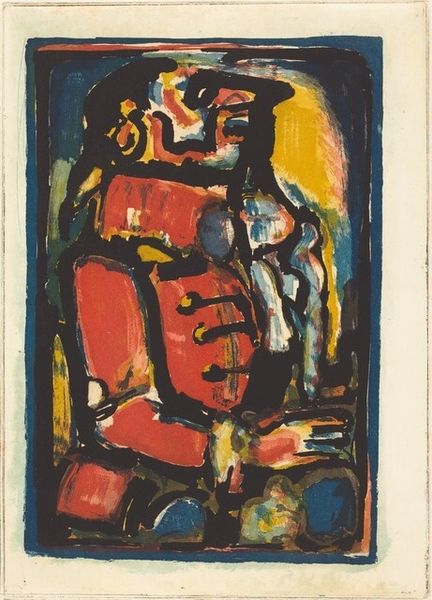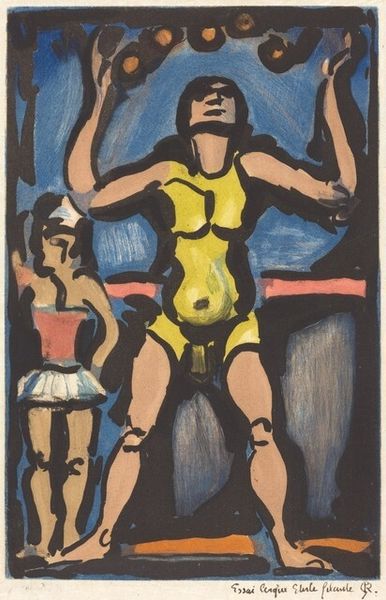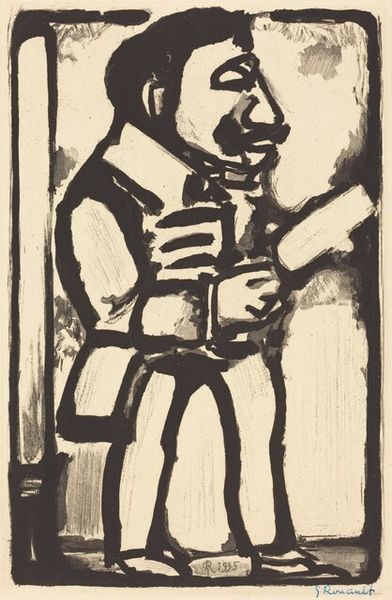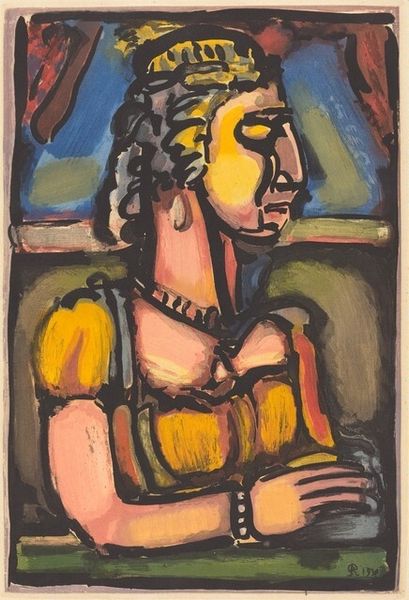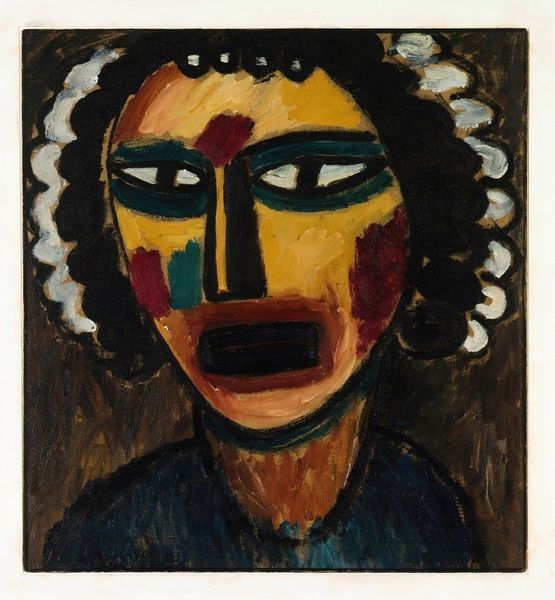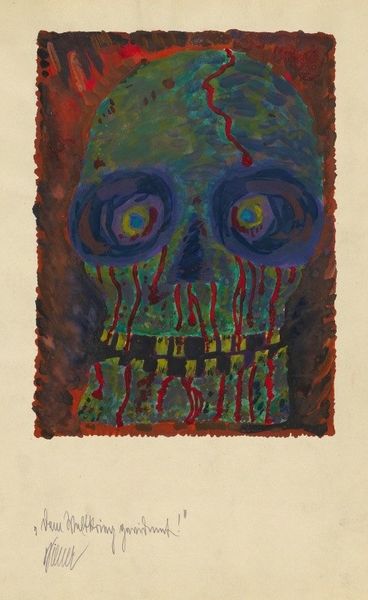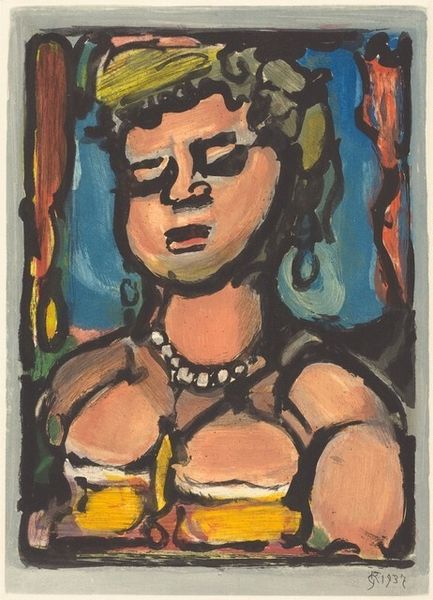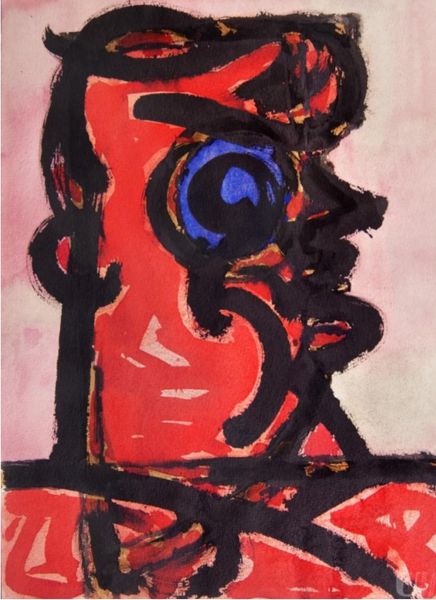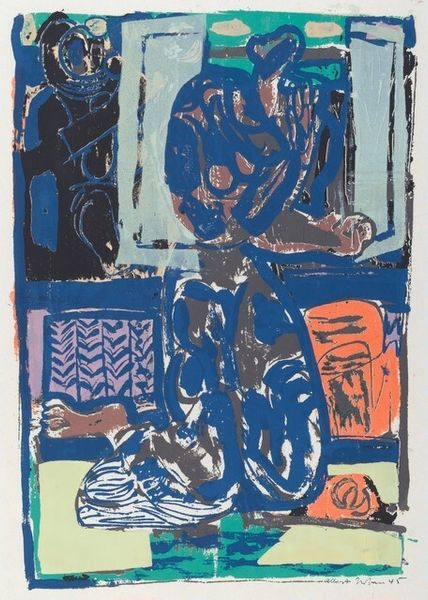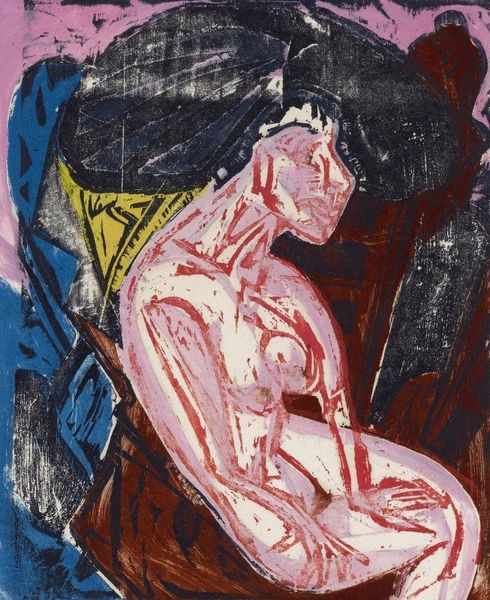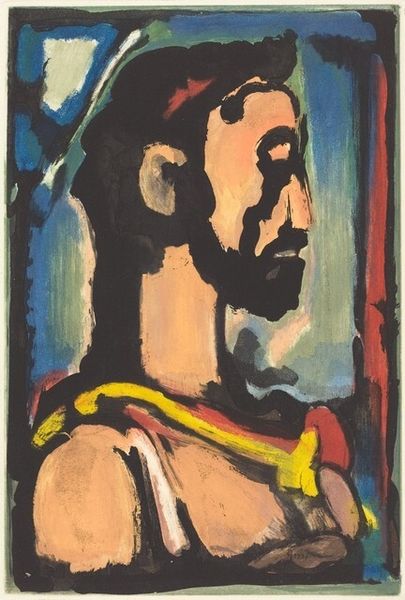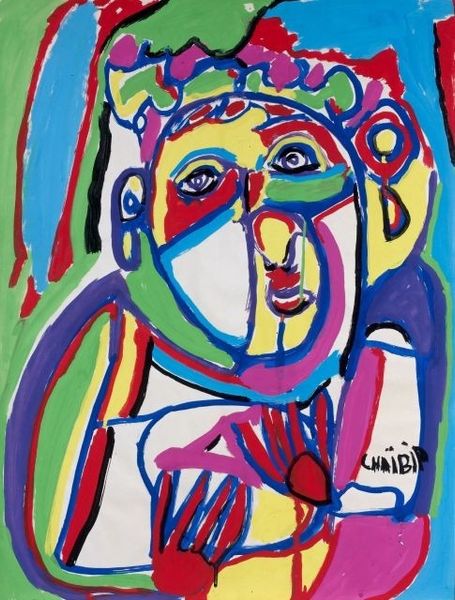
"Fiere autant qu'un vivant, de sa noble stature ..." 1936 - 1938
0:00
0:00
Copyright: National Gallery of Art: CC0 1.0
Editor: Here we have Georges Rouault’s tempera print from between 1936 and 1938, its title, "Fiere autant qu'un vivant, de sa noble stature..." What strikes me immediately is the harshness of the lines, like the subject is trapped in a stained-glass prison. How do you interpret this work? Curator: That sense of confinement is palpable, isn't it? Consider the social climate of the late 1930s in Europe: anxieties about impending war, the rise of oppressive ideologies. Rouault was deeply religious and often depicted figures marginalized by society – prostitutes, clowns, judges. How might this image be a commentary on those in power, perhaps complicit in creating this oppressive environment? Look at the rigid pose and almost grotesque exaggeration of features. Editor: It does feel like a critical portrayal. The title translates to something about pride despite being alive... almost sarcastic. Are you saying that this could be about those who cling to power and status while ignoring the suffering around them? Curator: Precisely! Rouault, through his expressionistic style, gives us a visual critique of societal structures. He prompts us to examine who benefits from maintaining the status quo and who is left vulnerable. Think about the way the figure is framed, almost like a puppet on display. What does that suggest about agency and control? Editor: That’s powerful. I hadn't thought about the puppet aspect, but it completely changes the meaning. Thank you for helping me see how social commentary is embedded in this piece. Curator: And thank you for bringing your fresh perspective. It’s by continually questioning and contextualizing art that we make it relevant.
Comments
No comments
Be the first to comment and join the conversation on the ultimate creative platform.
